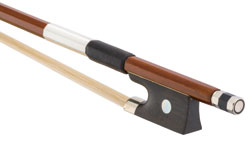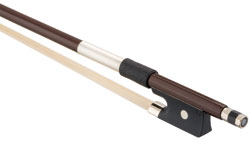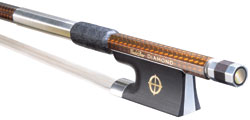A new bow can have an immediate and dramatic effect on your playing for a relatively modest investment. Many players do not realize how much they are held back by a bow that no longer meets their needs and skill level. Call a SHAR Violin Shop representative today at 866.742.7270. They can play-test and assist you in selecting the right bow to help you break through to the next level of performance. And please check out our other articles in the series, "Do I Need a New Bow?" and "How to Select a Bow."
The Most Common Bow Materials

Brazilwood: Typically used for student level bows, this wood can come from several members of the Fabace family of trees found in South America.

Synthetic: Bows made from fiberglass or composite materials. These bows are generally intended for students where durability is important.

Pernambuco: The premier wood used in bow making for centuries. It comes from the Brazilian Caesalpinia echinata tree, and only the most select lengths are used for bows. It is denser than related Brazilwood with a tighter grain, allowing for strong, stiff, lightweight bows.

Carbon Fiber: Typically handmade by layering carbon fiber mesh and a binder into molds and then further hand-finishing the stick. These bows usually react very little to changes in temperature or humidity making them excellent for playing in changing conditions. The higher quality carbon fiber bows are thought bymany to rival similar level pernambuco bows.


